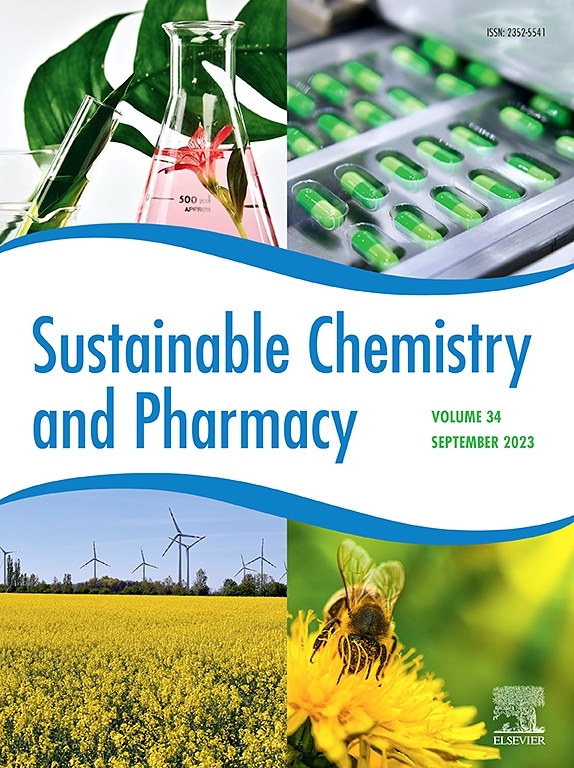Conversion, separation, and application of highly active sulfur calcium components in waste gypsum
IF 5.8
2区 化学
Q2 CHEMISTRY, MULTIDISCIPLINARY
引用次数: 0
Abstract
Industrial gypsum residues, including phosphogypsum, flue gas desulfurization gypsum, titanium gypsum, and fluorogypsum, represent a major category of calcium-based solid waste generated by the chemical industry. With rapid industrial growth, the accumulation of such residues has reached unprecedented levels, posing significant environmental risks due to improper disposal and underutilization. This review systematically examines the current status of resource utilization technologies for industrial gypsum, identifies critical limitations in existing approaches, and proposes a novel pathway for high-value added recycling, the preparation of α-calcium sulfate hemihydrate (α-HH) from purified industrial gypsum and its application in rubber and plastic composites. By addressing the challenges of impurity removal (e.g., heavy metals, phosphorus, fluorine) and phase transformation control, this work highlights the feasibility of multi-physics field assisted crystallization and physicochemical synergistic regulation to achieve high-purity α-HH. Furthermore, the integration of α-HH into rubber and plastic matrices is explored as a sustainable strategy to enhance mechanical properties, durability, and environmental compatibility of polymer-based products. This review establishes a “cradle-to-grave” framework for industrial gypsum utilization, emphasizing cross-sectoral collaboration and technological innovation to mitigate environmental burdens while unlocking economic value.

废石膏中高活性硫钙组分的转化、分离及应用
工业石膏渣,包括磷石膏、烟气脱硫石膏、钛石膏和氟石膏,是化学工业产生的主要一类钙基固体废物。随着工业的快速发展,这些残留物的积累达到了前所未有的水平,由于处置不当和利用不足,造成了重大的环境风险。本文系统地回顾了工业石膏资源利用技术的现状,指出了现有方法的关键局限性,提出了一条高附加值回收利用的新途径,即提纯工业石膏制备α-半水硫酸钙(α-HH)及其在橡胶和塑料复合材料中的应用。通过解决杂质去除(如重金属、磷、氟)和相变控制的挑战,本工作强调了多物理场辅助结晶和物理化学协同调节实现高纯度α-HH的可行性。此外,α-HH在橡胶和塑料基体中的整合是一种可持续的策略,可以提高聚合物基产品的机械性能、耐久性和环境相容性。本综述建立了工业石膏利用的“从摇篮到坟墓”框架,强调跨部门合作和技术创新,以减轻环境负担,同时释放经济价值。
本文章由计算机程序翻译,如有差异,请以英文原文为准。
求助全文
约1分钟内获得全文
求助全文
来源期刊

Sustainable Chemistry and Pharmacy
Environmental Science-Pollution
CiteScore
8.20
自引率
6.70%
发文量
274
审稿时长
37 days
期刊介绍:
Sustainable Chemistry and Pharmacy publishes research that is related to chemistry, pharmacy and sustainability science in a forward oriented manner. It provides a unique forum for the publication of innovative research on the intersection and overlap of chemistry and pharmacy on the one hand and sustainability on the other hand. This includes contributions related to increasing sustainability of chemistry and pharmaceutical science and industries itself as well as their products in relation to the contribution of these to sustainability itself. As an interdisciplinary and transdisciplinary journal it addresses all sustainability related issues along the life cycle of chemical and pharmaceutical products form resource related topics until the end of life of products. This includes not only natural science based approaches and issues but also from humanities, social science and economics as far as they are dealing with sustainability related to chemistry and pharmacy. Sustainable Chemistry and Pharmacy aims at bridging between disciplines as well as developing and developed countries.
 求助内容:
求助内容: 应助结果提醒方式:
应助结果提醒方式:


